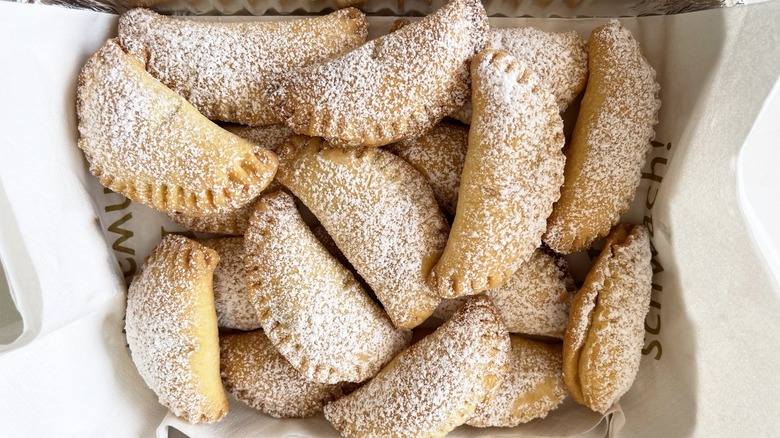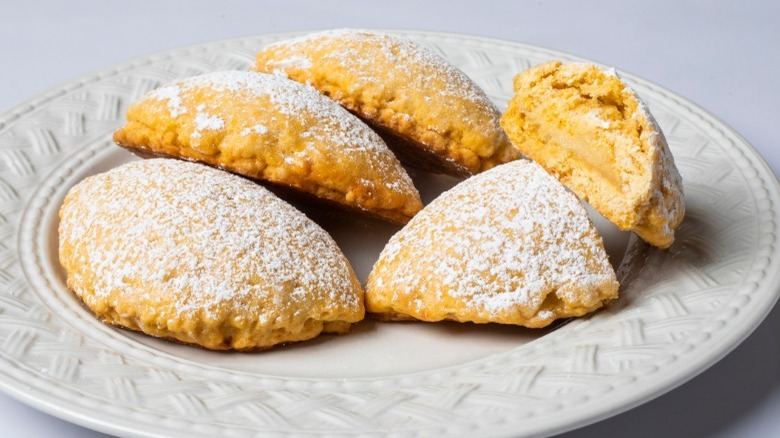Swap Savory Fillings For Something Sweet To Make Dessert Empanadas
When you think of empanada filling, what's the first thing that comes to mind? You could be thinking about beef, chicken, cheese, veggies, or some combination of those ingredients. Empanadas don't have to be confined to the world of savory foods, though. All you need to do to take your empanada from dinner to dessert is swap out the filling.
Making a dessert empanada can challenge your creativity to come up with any number of delicious filling combinations. You could think of your sweet empanadas like a Pop Tart, fill them with fruits or jam, and top them with sugar or icing. If you're a lover of all things chocolate, you could stuff the empanada dough with Nutella and bananas or even chocolate and peanut butter. Additionally, you could experiment with flavored or sweeter doughs, which feature more sugar than the traditional empanada dough that's meant to enclose a more savory filling.
Where do sweet empanadas come from?
Classic empanadas actually have a much richer and more interesting history than you may have expected. While you might immediately place empanadas in the category of Spanish food, they actually could have evolved from an Arabic food called sfeehas. Those are a portable meat pie. The Moors may be responsible for bringing sfeehas to Europe when they occupied parts of Spain. From there, the savory pies became entrenched in Spanish culture. The first mention of an empanada in a printed cookbook came all the way back in 1502. When Spain began exploring the "new world," they brought with them their culture — including their food. Regional variations of empanadas started popping up in Central and South America that incorporated sweeter flavors.
In Ecuador, one variation called empanadas de viento, which directly translates to "wind empanada," is filled with cheese and covered in sugar after it's fried. Empanadas de viento could pair perfectly with coffee in the morning, or could be enjoyed as a post-dinner dessert. Another regional variation that is filled with guava and cream cheese comes from Puerto Rico. It's believed to have evolved from a similar Spanish version that used a fruit called a quince — it kind of looks like an apple, if you're unfamiliar with one. Guava replaced quince in these empanadas because it's native to the locations the conquistadors traveled to, whereas quince is not. In Mexico, it's not uncommon to find empanadas de cajeta, which are filled with dulce de leche and covered in cinnamon sugar.

